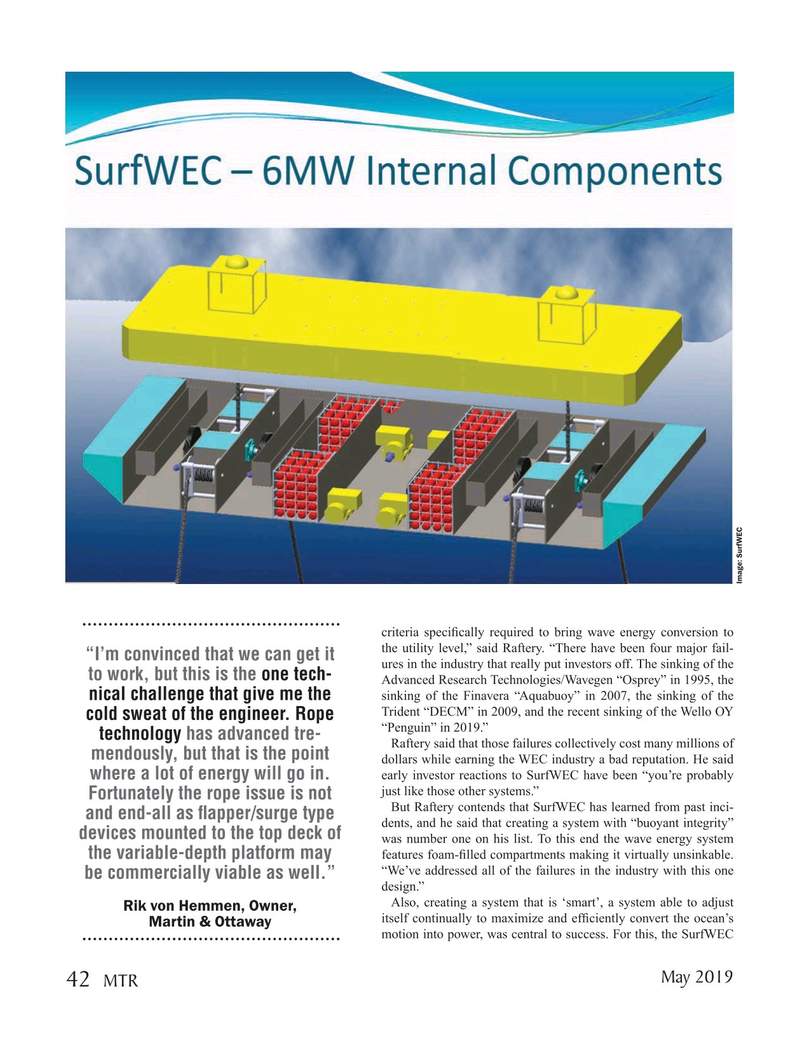
Page 42: of Marine Technology Magazine (May 2019)
Underwater Defense Technology
Read this page in Pdf, Flash or Html5 edition of May 2019 Marine Technology Magazine
Image: SurfWEC criteria speci? cally required to bring wave energy conversion to the utility level,” said Raftery. “There have been four major fail- “I’m convinced that we can get it ures in the industry that really put investors off. The sinking of the to work, but this is the one tech-
Advanced Research Technologies/Wavegen “Osprey” in 1995, the sinking of the Finavera “Aquabuoy” in 2007, the sinking of the nical challenge that give me the
Trident “DECM” in 2009, and the recent sinking of the Wello OY cold sweat of the engineer. Rope “Penguin” in 2019.” technology has advanced tre-
Raftery said that those failures collectively cost many millions of mendously, but that is the point dollars while earning the WEC industry a bad reputation. He said early investor reactions to SurfWEC have been “you’re probably where a lot of energy will go in. just like those other systems.”
Fortunately the rope issue is not
But Raftery contends that SurfWEC has learned from past inci- and end-all as ? apper/surge type dents, and he said that creating a system with “buoyant integrity” devices mounted to the top deck of was number one on his list. To this end the wave energy system features foam-? lled compartments making it virtually unsinkable. the variable-depth platform may “We’ve addressed all of the failures in the industry with this one be commercially viable as well.” design.”
Also, creating a system that is ‘smart’, a system able to adjust
Rik von Hemmen, Owner, itself continually to maximize and ef? ciently convert the ocean’s
Martin & Ottaway motion into power, was central to success. For this, the SurfWEC
May 2019 42
MTR
MTR #4 (34-49).indd 42 4/25/2019 9:57:26 AM

 41
41

 43
43
